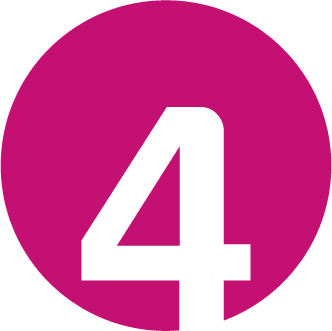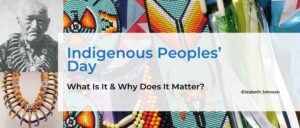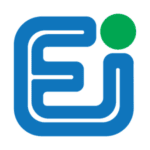Looking for more?
Explore all of our inclusive leadership resources including Meagan's TEDx talk, discussion guide, assessment, book chapter and more HERE .
This curriculum is available as an in-person or virtual workshop, or keynote speech. For workshops, there are multiple approaches to learning starting with a 90-minute workshop, and extending to a multiple day learning opportunity.
There are multiple types of audiences ideal for this curriculum.
- Managers: including business group leaders, team leaders, and project directors.
- Educators: including teachers, professors, advisors, counselors, and administrators.
- Students: including college and high school.

Introduction & Overview
How to become an inclusive leader
What's best for your team and budget?
This session can be 90-minutes to a full-day. If you want to have a series of shorter sessions, we recommend breaking down the elements of the Inclusive Leadership Development Model into separate units. Each of the four elements are described below.
TEDx Talk: How to become an Inclusive Leader by Dr. Meagan Pollock
Abstract:
Inclusive leadership enhances performance, collaboration, attendance, and reduces turnover, and facilitates environments where people feel valued, affirmed, and that they belong. Inclusive leaders are imperative for creating cultures, schools, teams, and organizations that drive equitable outcomes for historically marginalized and minoritized people. This workshop examines a four-part, iterative, reflective, and reflexive framework for developing into an inclusive leader.
Objectives:
By the end of the seminar, participants will be able to:
- Articulate the four parts of inclusive leadership,
- Assess and adapt their leadership practices to become more inclusive leaders, and
- Share specific goals and strategies for becoming an inclusive leader.
Recent Results:
ASEE’s Commission for Diversity, Equity, and Inclusion invited Meagan Pollock to present a 90-minute workshop at the annual conference in Minneapolis, June 29, 2022. We had 52 enthusiastic participants in an overflowing room during lunch on the final day of the conference, and 37 people evaluated the session. Here are some of the stellar results:
- On a scale of 1 to 5, how would you rate the session? 4.8
- On a scale of 1 to 5, how would you rate your presenter, Meagan Pollock? 4.9
- On a scale of 1 to 5, how likely are you to use something you learned during the session? 4.8
Testimonials from ASEE participants:
- “Meagan Pollock needs to share her expertise with all engineering leaders (which means ALL ENGINEERS)!!” Dan Linzell, University of Nebraska–Lincoln
- “I actually learned more about myself and my individuality. I hadn’t realized that I had confirmed my interests to fit in with my brothers. It gives me perspective for people that have done the same.”
- “This workshop was really useful and I plan on taking the time to have my student teams look at their individual arena and their lens.”

Unit 1: Individual
Who am I as a leader?
An inclusive leader understands the social and political context that creates their identity and how it influences and biases their perception of and outlook on the world.
Guiding Prompts:
- What is your positionality and how does it influence how you show up as a leader? (In what ways are we collectively encouraging one another to reflect on how social and political contexts create and inform our identities?)
- How will we establish and nurture a culture of feedback that empowers everyone to honestly examine blindspots and increase social consciousness? (In what ways are we inviting dialogue that collectively expands social consciousness and explains how our identities bias our perceptions and outlooks on the world?)

Unit 2: Lens
How does my filter influence my leadership?
SYSTEMIC THINKING
An inclusive leader considers how systems of oppression and advantage influence their decisions and impact their team.
ETHICAL DILEMMA OF BIAS
An inclusive leader investigates how interpersonal and institutionalized bias produce an ethical dilemma that one must address.
Guiding Prompts:
- What are the four I’s of oppression (ideological, interpersonal, institutional, and internalized) and how do they show up in our organization? How are we considering institutional barriers that marginalized and minoritized people face in the workplace and actively working to remove obstacles and supplant them with support?
- What is bias and in what ways are we establishing guardrails that attempt to protect us from biased decisions, policies, and practices?
- How can we use root cause analysis to reveal inequities our marginalized people face?

Unit 3: Practices
Which practices prioritize people?
HUMAN-CENTERED APPROACH
An inclusive leader works from an asset- or strengths-based mindset, recognizing the value and celebrating the beauty of diversity. They intentionally lead with empathy, curiosity, and open-mindedness to strengthen the dignity of all humans around us.
ACCOUNTABLE LIFELONG LEARNER
An inclusive leader reflects on personal and institutional actions and is committed to learning more about what they do not know, including other ways of knowing and doing. They are personally accountable for mistakes, failures, and mishaps (rather than deflecting, avoiding responsibility, and claiming good intent).
Guiding Prompts:
- How can we use the principles of empathy-led design thinking to inform how we operate as a team/organization?
- How can we shift mindsets to value and elevate different ways of knowing and doing? How are we celebrating differences rather than suggesting (implicitly or explicitly) people hide and avoid them? (What is the competing values framework, and how do individualistic vs collectivist ways of knowing and doing impact the workplace?)
- How can we practice visible accountability for mistakes, failures, and mishaps that models a growth mindset and the active journey toward inclusive leadership?

Unit 4: Outcomes
What outcomes inform progress?
CULTURALLY INTELLIGENT COMMUNICATION
An inclusive leader is attentive to which voices, values, and ways of knowing and doing are present, missing, or silenced. They actively and empathically listen and search for cues to bridge gaps among diverse people.
INCLUSIVE COLLABORATION
An inclusive leader actively and equitably engages diverse perspectives, experiences, and backgrounds to enrich the collectively shared environment and balances the assumed norms to allow for more authentic engagement.
Guiding Prompts:
- In what ways are we actively listening to marginalized voices and striving to incorporate their ideas? (What is active empathic listening?)
- How are we evaluating and refreshing our team norms so that more people authentically engage?




